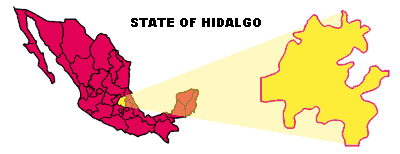Pinguicula moranensis
from El Chico
go to : Home
index of species
TAXONOMY:
Family :
Lentibulariaceae
Genus :
Pinguicula
Name :
Pinguicula moranensis var. neovolcanica
(see ORIGIN AND HISTORY below).
Sub-classification
(Casper) : link
Publication : "Notas
sobre la identidad de Pinguicula moranensis H.B.K. con la description de
una variedad nueva" by Sergio Zamudio, in acta botanica Mexicana, N°49,
pages 23-34.
DESCRIPTION :
-
soon -
ORIGIN AND HISTORY :
The only
information is given by Hans Luhrs in his article in IPSG, Newsletter N°4,
February 1994 on Pinguicula acuminata :
He
was looking for Pinguicula acuminata in El Chico National Park and
found that this species grow together with Pinguicula moranensis on
most places. I feel that this is this clone labelled 'El Chico'. In 1999,
Serdio Zamudio, the famous Mexican botanist published the following article
about a new described variety : Pinguicula moranensis var. neovolcanica.
"Notas sobre la identidad de Pinguicula moranensis H.B.K. con la
description de una variedad nueva" by Sergio Zamudio, in acta botanica
Mexicana, N°49, pages 23-34. (see the specific page - soon - ). One of the
decribed locality for this variety is in El Chico National Park. The plants
labelled Pinguicula moranensis 'El Chico' can be Pinguicula
moranensis var. neovolcanica as the plants feet well the
description in this publication.
Map / LOCALISATION :
From
Mexico, state of Hidalgo, municipality of El Chico and its surrounding area
together with Pinguicula acuminata.
(click
on the map for better location and relief
map)

El
Chico National Park is located on the eastern side of the Sierra de Pachuca
mountains and ranges in altitude from 2,320 meters to a height of 3,090 meters
above sea level. In 1898 it became the first national park decreed a natural
reserve. The park covers an area of 2,739 hectares and is popular with hikers,
mountain bikers and rock-climbers who come to scale its rocky peaks, including
"La Ventana", the highest point in the park, just outside of Mineral
del Chico.
HABITAT:
The only
information is given by Hans Luhrs in his article in IPSG, Newsletter N°4,
February 1994 on Pinguicula acuminata. On shady banks
in misty forests, abundant in loamy soil between rocks on humid sites, and
associated with colonies of moss, ferns and succulents, in wooded area of
Quercus and Abies species, at altitude between 2400 and 2800m. On most places,
Pinguicula acuminata is found together with Pinguicula moranensis.
TEMPERATURE
and PRECIPITATIONS :
Click
on the graph to enlarge
and see the graph of normal precipitation and normal average temperatures.
Normal values are 30-year averages for the period 1961 to 1990. The weather
stations are grouped by region (see map of weather
stations).

Introduction in culture
:
My
clone comes from "bestcarnivorousplants.com" nursery.
CULTURE
AND MULTIPLICATION :
(North
hemisphere, France
near Paris, in a polycarbonate greenhouse - see the map
-)
Life
cycle :
The
life cycle observed in culture for this Pinguicula
consists of two seasons, one wet and the other dry (see link). The plant forms different
leaf rosettes according to the season. During the resting months (winter) the
small succulent rosette is composed of numerous non-carnivorous leaves. The
carnivorous leaves are produced in spring and during all summer. The life
cycle of the plant is probably similar in it's native habitat.
Media
: I use a 100 % mineral media :
2 perlite, 2 vermiculite, 1 small sand (for aquarium), 1 fine white sand, 1
pouzzolane (volcanic lava), 1 aqualit (expansed ceramic for aquarium). The
aqualit can be replaced by 1 of pouzzolane. Plants in this media grow slower
but have a stronger root system.
Pot
: plastic,
colour terracotta, diameter 12.5cm, height 12cm.
Cultivation
:
I
think that a slightly airy situation inside the greenhouse is important
to avoid air stagnation. For this reason, I use a fan 24h/24h all the year
round.
Watering
is very important : from
May to September (summer). I let the media drying sligthly between two
watering. I use rain water poured on the top of the pot taking care
not to wet the rosette. From October to April, It is important to let
the media drying completely (no watering) but with an atmospheric humidity of
about 80%.
The mentioned months are indicative and can change
according to your own growing conditions. In fact, when this Pinguicula
begins to produce its non-carnivorous leaves, you have to stop watering and
let the pot drying out completely. Inversely, when the plant begins to produce
in early spring its carnivorous leaves, you have to progressively start
watering again the pot.
Temperatures : during
growth period, day temperatures are about 25°C but can reach 35°C when the
sun is shining on the greenhouse in spite of the use of shading covers.
Night temperatures are around 20°C. During
resting period : day/night over freezing point. Lower temperature
observed : - 4°C. I use an electronic petroleum heater to provide heat.
Flowering
period : not observed up to now
Multiplication
:
The plants
can be propagated easily using non-carnivorous leaves separated from the
rosette at the end of winter. You only have to carefully tear out all the leaf
particularly with the white base. The new plantlets will sprout from this area. Don't
try with the summer leaves, it is harder.
PICTURES: (click to enlarge)


.jpg)
.jpg)
.jpg)
.jpg)
.jpg)
.jpg)